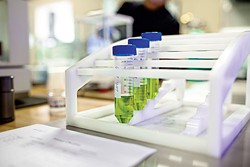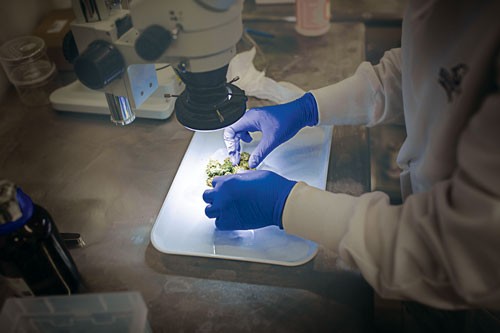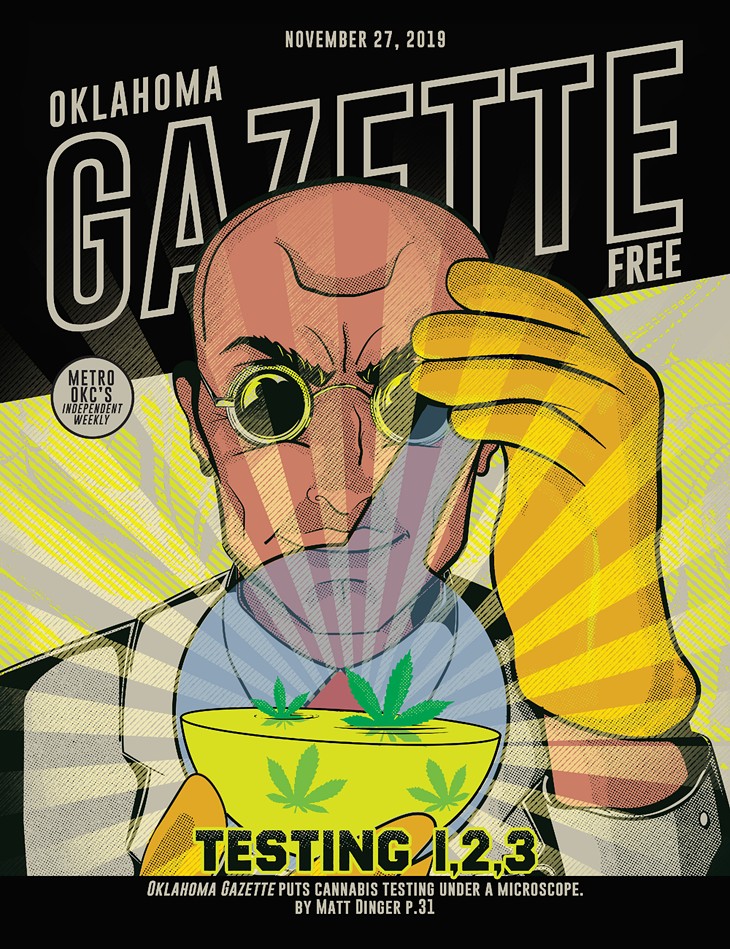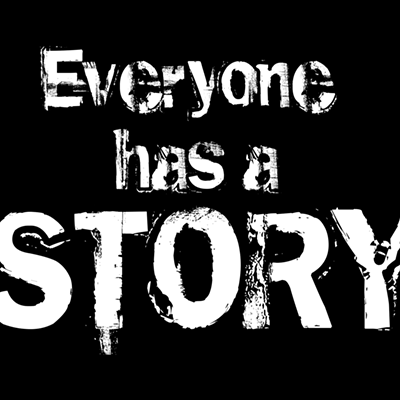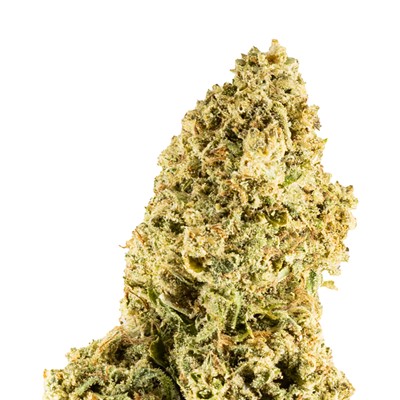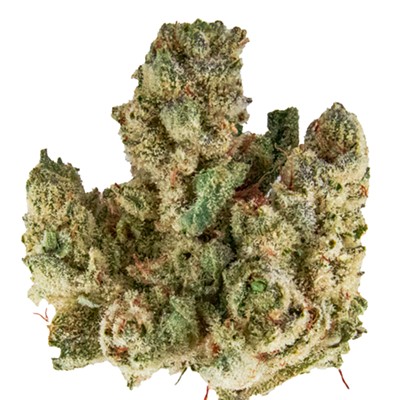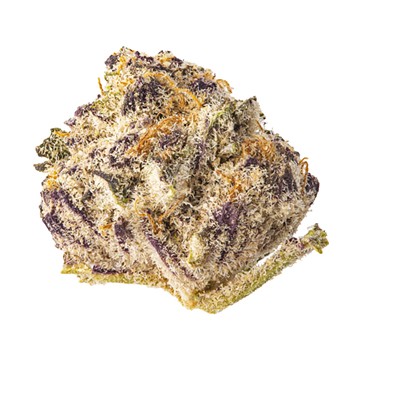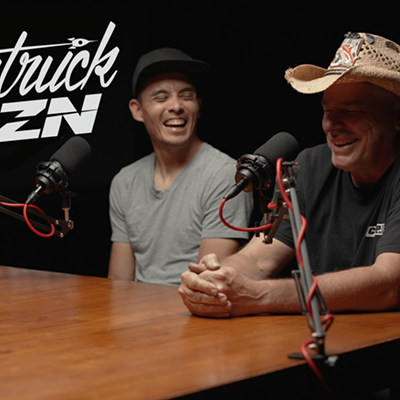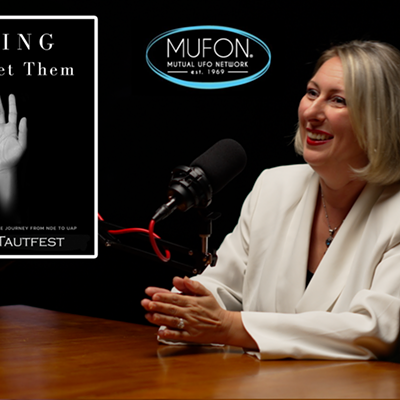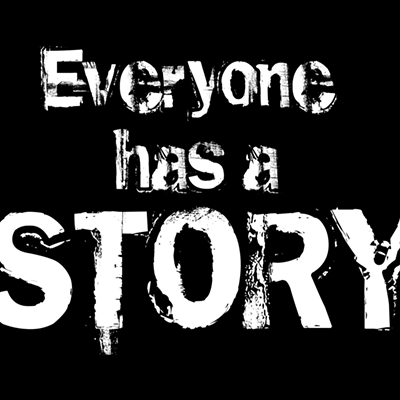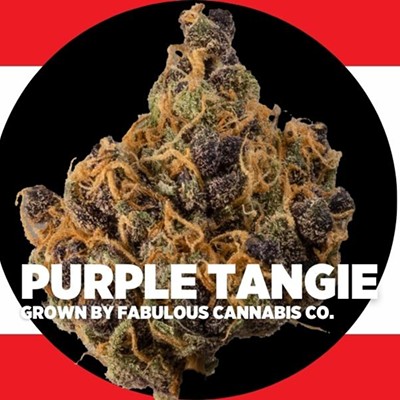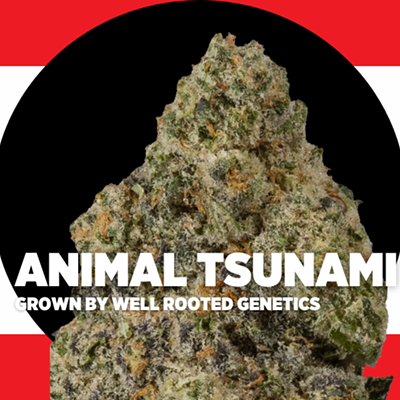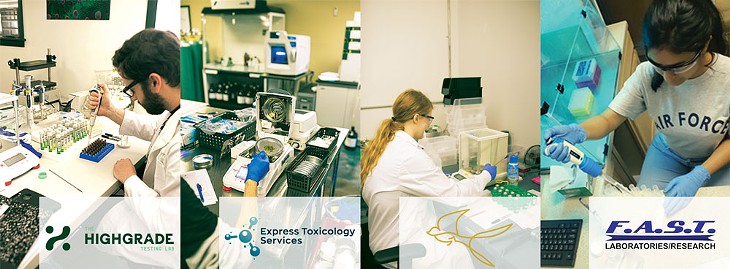
Testing is now required for all cannabis products in Oklahoma. Meanwhile, all laboratories currently operating in the state are being tested by growers and processors and will soon be tested by the state.
Several labs in the Oklahoma City metro have been operating since well before sample testing became a requirement, and savvy cannabis consumers by now have no doubt seen at least one comparison of similar samples (often from the same batch, if not the same plant) with varying numbers, including THC and CBD potency. The question is, Who is right?
The answer, at least for now, is everyone and no one. While all growers and processors are required to test their products with one of the many available labs, none of them are yet accredited, nor is the so-called “surveillance laboratory,” or “the lab to test labs,” operational yet in Oklahoma.
The newest version of the Oklahoma Medical Marijuana Authority (OMMA) rules released Nov. 1 deal with that issue, but for now, producers, consumers and even the labs themselves are partially in the dark about what their cannabis contains.
Oklahoma Gazette submitted a flower sample to four Oklahoma City metro laboratories and spoke with its personnel about lab testing. All of them waived their testing fees for the purposes of this experiment, and Fire Leaf Dispensary was gracious enough to provide the flower for samples, a batch of the Lemon Tree strain.
Oversight wanted
The heading for Subchapter 8 of the OMMA rules describes the purpose of laboratory testing as such: “To ensure the suitability and safety for human consumption of medical marijuana and medical marijuana products, growers and processors are required to test medical marijuana and medical marijuana products for microbials, mycotoxins, residual solvents, pesticides, THC and cannabinoid potency, terpenoid potency, heavy metals, and contaminants and filth in accordance with the following standards and thresholds.”Batches are defined as being no larger than 10 pounds, and all acceptable levels of the non-cannabis materials listed above are delineated in the rules.
A point of recent contention is the sample size for testing of the batch, which includes half a percent of the batch for testing and a reserve amount also set at half a percentage. This means a 10-pound batch will be required to provide 23 grams for the testing and 23 grams in reserve. This number applies to all products, whether they are flower, distillate, edibles, etc.
“We are super excited about that there’s some regulation going on with labs because it shouldn’t matter what lab you go to.”
tweet this
—Carl Wheeler
As these rules have been adopted by the OMMA based on input, they may be modified at any time and are expected to be as the cannabis industry in the state matures.
One of the major changes expected in the laboratory testing requirements is the accreditation of all working labs in the state.
From the OMMA rules: “A laboratory that submits an application to become a licensed testing laboratory prior to January 1, 2020 must have made application for accreditation to ANSI/ASQ National Accreditation Board, American Association for Laboratory Accreditation (A2LA), Perry Johnson Laboratory Accreditation (PJLA), or any other accrediting entity using the ISO/IEC Standard 17025, at the time of application. Application for accreditation must be made to one of these entities in both chemistry and biology, or cannabis.”
The second facet of laboratory standardization scheduled to come online early next year is the creation of the “surveillance laboratory,” through which all laboratories testing Oklahoma cannabis will be required to provide samples for review at least three times a year.
“If the Department determines on the basis of a proficiency testing that the laboratory has not satisfactorily identified the presence, quantity, or other relevant factor(s) pertaining to a given analyte, the Department may revoke the license, require additional tests, and/or require remedial actions to be taken by the laboratory,” according to the rules.
All of the labs Gazette spoke with for this story, plus several others, have formed a voluntary coalition and communicate and work with one another about procedures and requirements as well as meeting with OMMA’s new laboratory program oversight manager director, Lee Rhoades.
“To OMMA’s credit, they realized that they didn’t know what they were doing in the cannabis space and they’re like, ‘Look, we’re open to input. We want help.’ And so we’ve been meeting with them and we’ve been providing recommendations, some of which they’ve gone with and some of which they haven’t,” said Matt McRorie, general counsel for Express Toxicology Services. “[Rhoades] has been really helpful and instrumental because he realizes the burdens that it puts on the industry, but at the same time, there’s all the internal political pressure and stuff at OMMA, so he’s trying to do the right thing. They got overwhelmed by a citizen’s initiative, and they wanted a full regulatory scheme sent out in 10 minutes, and you just can’t do that. It’s not even feasible, and so you’ve had the Wild West for the past year.”
All of the laboratories Gazette spoke to are looking forward to accreditation and laboratory oversight.
“We are super excited that there’s some regulation going on with labs because it shouldn’t matter what lab you go to, and more regulation will help that,” said Carl Wheeler, business director for The Highgrade Testing Lab. “Not saying that we’re doing it right and everyone else is doing it wrong at all. It’s just some standards that all the labs are following. That will help with making sure that every single thing is tested the same way because a lot of the flack that laboratories in general are catching is that like, ‘Hey, this flower testing different than this flower that I tested at this lab over here. Why is that?’ There’s so many different reasons why that could happen. One of them totally is that the lab doesn’t have their calibrations right or the method by which they’re doing the test needs to be fixed. But if everyone has been told by a central authority the way that it’s supposed to work, then that will make it such that like everyone’s doing it the same way at a minimum.”
Sample acquisition
As it currently stands, growers and processors are allowed to bring their samples for testing directly to the labs themselves, but the new rules will modify this procedure.“Samplers shall collect samples at the location of the grower or processor. A licensed laboratory must either utilize a licensed commercial transporter to transport samples or obtain a commercial transporter license in order to transport samples from the grower or processor to the laboratory. All commercial transporters transporting to a laboratory shall be prohibited from storing samples at any location other than the laboratory facility. All samples must be delivered the day of collection. The laboratory may obtain and analyze samples only from harvest batches and production batches in final form,” OMMA rules state.
Ian Cameron, lab director for Scissortail Laboratories, explains why random sampling on-site is important.
“The idea is to get a random sampling of your crop,” Cameron said. “What happens now is that if you bring in your sample, you’ve got a bunch of plants. Some don’t look so great, but you’ve got a handful of them that look top-tier, so you can say, ‘Okay, I’m going to use those buds, the top buds, the juiciest ones I could possibly find, look at them under the microscope, I’m going to send those in the lab because they’re going to impart the highest potency, maybe the best terpene profile, whatever it is.’ So the idea is to eliminate that by having third-party testing and then with the amount it’s coming up with based upon its volume or its weight, it’s coming up with a representative sampling.”
Other states do their randomized samples for testing by a three-dimensional grid, taking coordinates and plucking a sample determined by length and depth of the material, like a 3D game of Battleship.
Testing samples
While each of the laboratories uses different equipment made by different manufacturers, they follow much of the same procedures.Cameron gave a walkthrough of Scissortail’s testing process. The process here has been simplified drastically.
As the program stands currently, patients, growers or processors can bring their samples directly to the labs. After the sample is logged under the OMMA license number, it is relinquished, labeled, photographed and weighed.
Then comes a visual inspection under a low-power, wide-field microscope for pests and other issues.
“Things like mold and mildew, if it’s a real heavy, heavy infection, you can see it. It stands out like a sore thumb. … The other day, we had a caterpillar in there. A full-on caterpillar,” Cameron said.
For flower, the sample is frozen and then ground. Scissortail uses a stainless steel mortar and pestle.
“One of the issues that they had in Oregon and California for a while was cross-contamination from grinding, pesticides specifically,” Cameron said. “The reason being is because pesticides are notoriously sticky. You need some sort of a solvent to rinse them off. You can’t just use a little bit of hot water. They don’t go away readily.”
It goes through a dry weight analyzer, and solvents are added and then the substances to be tested, or analytes, are extracted. Then the sample is tested.
The two most common methods for cannabis testing are gas and liquid chromatography, specifically high-performance liquid chromatography and mass spectrometry.
Sample variance
The biggest controversy involving cannabis testing has been disparate results based on the same samples from different labs. There are many different explanations for this phenomenon.Kyle Felling, owner and lab director of F.A.S.T. Laboratories, uses an analogy involving another popular Oklahoma crop.
“Have you ever grown tomatoes? Because that’s a common thing that a lot of people have really tried to grow at some point in their life. Or have you ever seen tomatoes on a tomato plant? And of course most people answer, ‘Well, yeah, I’ve done that,’” Felling said. “Have you ever grown a tomato plant where every single tomato on that plant looks exactly the same, has the same color, tastes exactly the same and everything else? And, of course, their answer is, ‘No. That’s crazy. They’re all different sizes.’ The cannabis bud is the same way. I’ve done a little bit of research myself, and I’ve taken buds, with a grower, from the top of the plant, buds from the middle of the plant, and buds from the bottom of the plant and we’ve tested all of them, and they have a variance in them, a variance of up to 6 percentage points depending upon where they were. But then the even better deciding factor, we took two buckets from the same branch, and one tested out at like 13 percent. The other one tests out at 17 percent. Quite a bit of difference between the two, and they were on the exact same branch at the same point. So flower material is, to use the scientific term, very inhomogeneous, so unless the people that are doing these studies ground it all together and then sent off parts of that ground specimen to different labs, there’s no way they’re coming back the same except by chance luck.”
“Unless the people that are doing these studies ground it all together and then sent off parts of that ground specimen to different labs, there’s no way they’re coming back the same except by chance luck.”
tweet this
— Kyle Felling
In order to homogenize the samples used for this experiment to the best of our ability, Gazette took buds of similar sizes from the same Lemon Tree batch and ground them together using a food processor. Once the samples were thoroughly ground, portions that were roughly even were divided up into four identical glass containers and taken to the labs. All samples were kept at room temperature prior to being transported to the labs, where they were tested only for potency and terpenes.
The first sample was taken to Scissortail at about noon on Nov. 13. The second sample was delivered to Highgrade at about noon on Nov. 14 and the third sample was delivered about three hours later to Express Toxicology. The final sample was delivered to F.A.S.T. Laboratories at about noon on Nov. 19.
Highgrade reported a potency of 13.71 percent THC. Express reported that the sample contained 12.14 percent THC. F.A.S.T.’s report states that the sample contained 15 percent THC. Scissortail’s instrument went down and they were unable to complete sample testing by press time Nov. 25.
All reported small amounts of CBD in the samples and beta-caryophyllene as the predominant terpene in the samples with beta-myrcene also being present as a secondary terpene.
None of the labs were made aware of the results before publication. The full lab reports can be accessed at the bottom of this story.
The variance found within the test results of the sample were predicted by Felling before they were submitted.
(Update: Scissortail Laboratories sent its completed potency results at 2 p.m. Nov. 27. The sample tested at 17.42 percent THC and .05 percent CBD. A terpene test result on the sample was not received.)
“Say the true answer of this flower is 20 percent THC, which of course, I don’t know what it is, but say the true answer is 20 percent,” Felling said. “Most people in the state are using HPLC or high-performance liquid chromatography for potency, and accuracy or what’s called the uncertainty of measurement on those is about plus or minus 10 percent. And what I always tell people is that doesn’t mean 10 to 30 percent. If it was 20 percent, what it means is 10 percent of that number. So the true answer is 20, you can expect from any lab using HPLC a variance of around 18 to 22 percent would be statistically the same number.”
That variance also changes if the percentage is much larger or smaller.
“Using distillate, if the true answer is 80 percent, then the quote unquote valid answer is anywhere from 74 to 88 percent because that number’s large,” he said. “If one lab gives you 74 percent and the other lab gives you 84 percent, is one right and one wrong? Are they both right? And they’re like, ‘Well, no. One’s got to be right and the other one’s gotta be wrong.’ And I was like, ‘No. Realistically, if that really answers 80, they’re both right within the variance of the machine,’ and then I follow that question up with them, saying, ‘Okay. Well, let’s say you’ve got another plant that’s got a minor cannabinoid like CBD that comes in at 1 percent and one company comes in at like .80 percent and another company comes in at 1.3 percent.’ I was like, ‘Is that close enough? Are they the same number?’ And they all say, ‘Yes, they’re very close; they’re within .5 percent of each other,’ and I say, ‘No. Not if the real answer is 1 [percent]. The variance would tell you that .9 [percent] to 1.1 [percent] are acceptable answers there.
“When you’re talking about variances, small numbers produce small variances, large numbers produce very large variances, and so it all comes with education of people, what they’re looking at with the materials. But on the homogeneity, distillates should realistically be spot-on from lab to lab to lab to lab because you don’t have that inhomogeneity that you have with flower.”
Assuming that the true number is somewhere in the middle of the range of percentages reported back by the laboratories, then all of the results are within an acceptable margin of error. But until the state’s surveillance laboratory is up and running, assumptions are all there is.
Surveillance laboratory
Oklahoma House Majority Leader Jon Echols, R-Oklahoma City, was directly involved with crafting legislation that created the framework for the surveillance laboratory, which should be up and running in 2020.
“This was really my baby,” Echols said. “Everybody struggles with, How do they test labs? And what most people do is they have the government go in and test them, and I just thought that was a terrible idea, so we created a lab that tests labs. The requirements are that they have nothing to do with the medical marijuana industry. So if you’re the lab that tests labs, that’s all you get to do. And obviously the reason is you don’t want to let lab X be the lab that tests labs and be able to be in competition with everyone else. That’s not fair. When we do that, it’s going to put everybody on a level playing field. Everybody’s being graded by the same professor, so to speak. I think if we do this for about 12 months, Oklahoma is going to have the best testing in the nation because everybody’s going to up their game because they’re all being graded the same. And the way we did it, it doesn’t add huge expense. … We don’t have the lab infrastructure to do it, period. We’re not state-of-the-art. But when we do it this way, I think it’s going to up our game. I believe if it works the way I think it will, other states are going to be copying us as to how they take care of the labs, and it makes for a better product. If I’m a patient that knows that, for example, I need to be on 1000 milligrams of CBD as opposed to 500 because that’s what cuts down my headaches because of the anti-inflammatory, I need to know what I’m buying is 1000 or at least as close to 1000 as you can get, given the science. … People forget testing is not just about safety; it’s also about patients knowing what it is they’re buying.”


